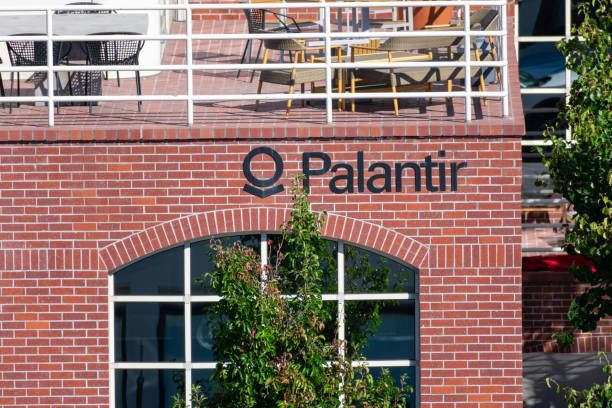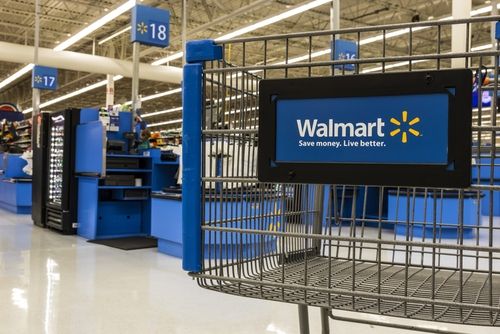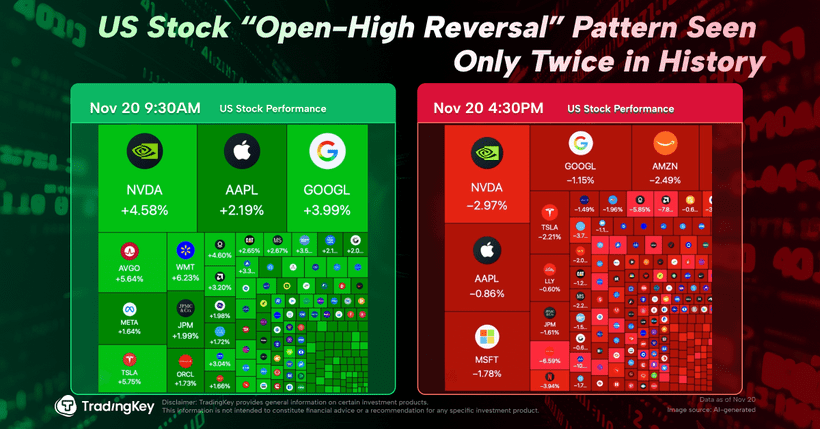Investing in Healthcare Stocks


- After trailing markets in 2024, healthcare stocks have potential upside supported by innovation, lower valuations, and stabilization in utilization.
- Key opportunities lie in specialty pharma (e.g. obesity, RNA therapies), medical devices, and integrated healthcare platforms.
- Insurer and provider stocks face cost pressures but selective plays like CVS have begun to rebalance successfully.
- Technology-driven healthtech—including AI diagnostics, wearables, and cloud platforms—is becoming a major growth frontier.
TradingKey - After a year of underperformance, the health care sector is emerging as one of the most interesting places for long-term investors looking for a mixture of resilience and innovation. The health care stocks trailed broader indexes in 2024 as money poured into AI, technology infrastructure, and cyclicals. But with valuations now compressed and cycles of use calming down, the sector is primed to re-emerge. Many times before, the moment had seemed like the prior cycle where health care underperformed only later to outperform through volatility and macro rotations.
The fundamental drivers stay intact. An aging world population, chronic disease burden increases, and persistent need for therapeutic advances continue underlying long-term drivers. Even as near-term news flows have dwelled on payers inflation of cost and regulatory uncertainty, those headwinds may now be fully embedded, leaving room for re-rating.
Healthcare would never keep pace with high-beta technology or commodities, but with its unique capacity for structural defensiveness as well as moments of innovation-fueled growth, it is vitally important building block of an appropriately constructed portfolio at least in today’s flawed macro environment.
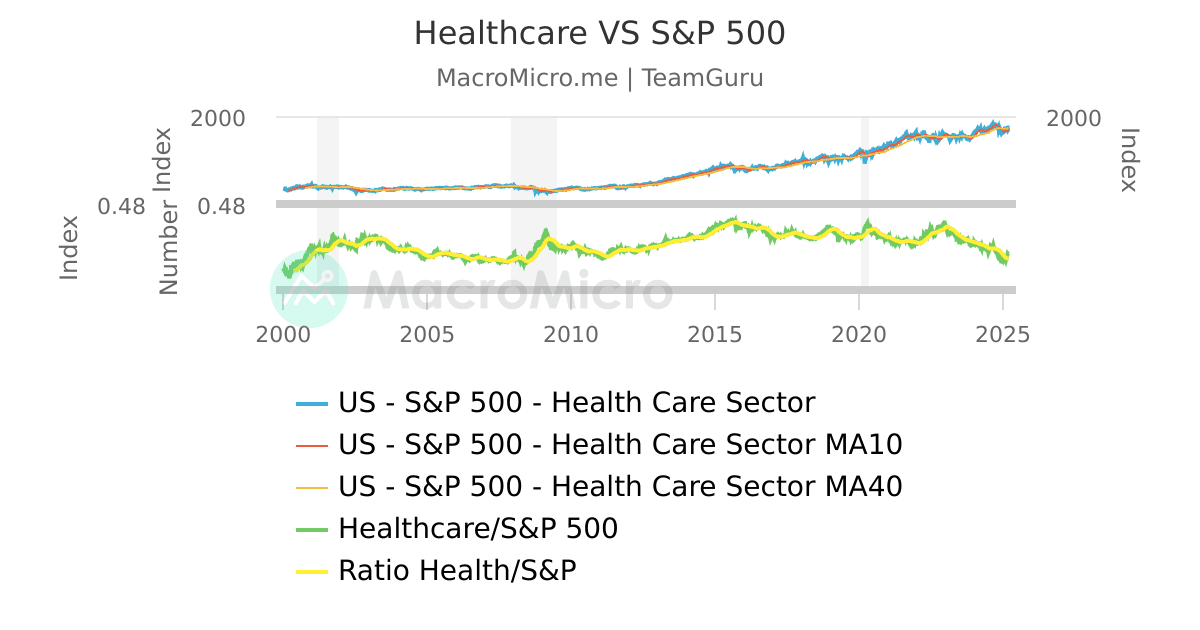
Source: https://en.macromicro.me
Innovation Catalysts: Specialty Pharma and the Biotech Renewal
One of the most powerful growth drivers within health care remains specialty medicines. Those drugmakers focused on high-impact areas such as obesity, ultra-rare conditions, RNA therapeutics, and immuno-oncology have generated breakthroughs and blockbusters. Leaders such as Novo Nordisk and Eli Lilly are swiping headlines and sharing equally as the aftermath of healthy demand lifts within obesity and diabetes medicines. Concurrent with all of that, renaissance within biotechnology is beginning to build momentum with smaller outfits gaining back investor popularity with derisked pipelines, cutting R&D costs, and upward movement on M&A activity.
The obesity drug market alone is on track to surpass $100 billion of annual sales within the next decade alone, and already is transforming the strategic math of incumbent pharma as it is of startup biotech platforms. Elsewhere, antibody-drug conjugate, gene therapy, and precision oncology stocks are benefiting from the larger capital inflows as investors re-rotate into higher-conviction, late-stage stories. The sector’s risk-adjusted return profile after an ugly post-COVID hangover looks much more attractive once again.
Reset and Repricing: Managed Care and Provider Platforms
At the opposite end of the sentiment spectrum are insurers and health care providers, many of whose businesses were severely jeopardized by cost escalations and increases in medical utilization in 2023 and 2024. Stocks like UnitedHealth, Centene, and Molina had their outlook for earnings reduced, stocks re-priced, and sentiment decline. But perhaps the pendulum is swinging back. All companies are not equal, and performance by diversified platforms like CVS Health of late indicates margin enhancement, price discipline, and platform leverage can regain investor favor.
CVS, previously penalized with peers, last reported good earnings with guidance lifts and clear affirmation of medical cost management improvement. The share surged sharply and issued guidance on more selective optimism of the sector. Ahead, payers capable of managing cost cycles and cashing in on their vertical integration, pharmacy benefit management, on-site clinics, information platforms, may be more likely than those with Medicare Advantage reimbursement to outperform.
Source: https://www.blackrock.com
Devices, Platforms, and the Silent Healthtech Renaissance
Next after insurers and drugmakers is the lesser-publicized but no less essential frontier of healthtech and medical devices. Medical device sector businesses like Medtronic, Boston Scientific, and Zimmer Biomet yet have stable volumes and pipeline build-out going on, but have until now flown under the radar of investors.
Most of them trade on historically suppressed earnings multiples with good product demand and operating leverage in hand. Yet others like Veeva Systems are building the digital infrastructure of clinical research, drug approval workflows, and regulatory compliance, all of which is mission-critical infrastructure in an era of post-COVID requirements of digital first.
Where pure-play healthtech valuations skyrocketed in 2020 and 2021, the present landscape offers a more rational entry point. At the same time, artificial intelligence is starting to revolutionize the realm of diagnostic imaging, claims work flows, and drug discovery work flows, offering yet another dimension of acceleration to healthtech businesses. Long-term investors, more than anyone, value hybrid plays of technology and health care sectors more frequently at the intersection of multidecade compounding narratives.
Secular Tailwinds and Policy Clarity on the Horizon
Health care’s macro structure is still uniquely positive. Aging of the U.S., European, and East Asian populations is boosting demand for chronic care management and high-end therapeutic intervention. Developing markets continue to expand their health care infrastructure, offering long-term prospects for diagnostics, drugmakers, and delivery systems.
While political risks around drug prices have loomed huge in recent years, recent news suggests the policy environment might have reached peak unpredictability. The majority of the most extreme regulatory upheavals have either gotten watered down or recessed into stretched timelines, and the marketplace has had more than enough time to repricing them. In addition, the strategic value of life sciences, driven by geopolitical rivalries as well as home-shoring agendas, is creating a new aspect of public-private investment, more specifically within biotech as well as domestic drug manufacturing.
Portfolio Strategy: Where To Focus In The Industry
With the depth and breadth of the sector, investors have to be selective. Large-cap drug stocks with pipelines and commercialization on the record, such as Eli Lilly, Pfizer, Merck, and Novo Nordisk, give growth and defensiveness. The biotech is higher-risk and higher-reward, particularly in late-stage with near-term catalysts at the FDA or strategic partnerships. Insurers such as Elevance and diverse platforms such as CVS can give value as well as cash flow stability as the cycles of cost moderate.
Device and technology health care businesses like Boston Scientific, Medtronic, and Veeva offer a less exuberant but steadier choice, better aligned with investors looking to experience innovation exposure with relatively less volatility. As a passive choice, equally weighted or actively managed health care ETFs may replicate the sector’s breadth while damping the idiosyncratic risk of any particular subsegment.
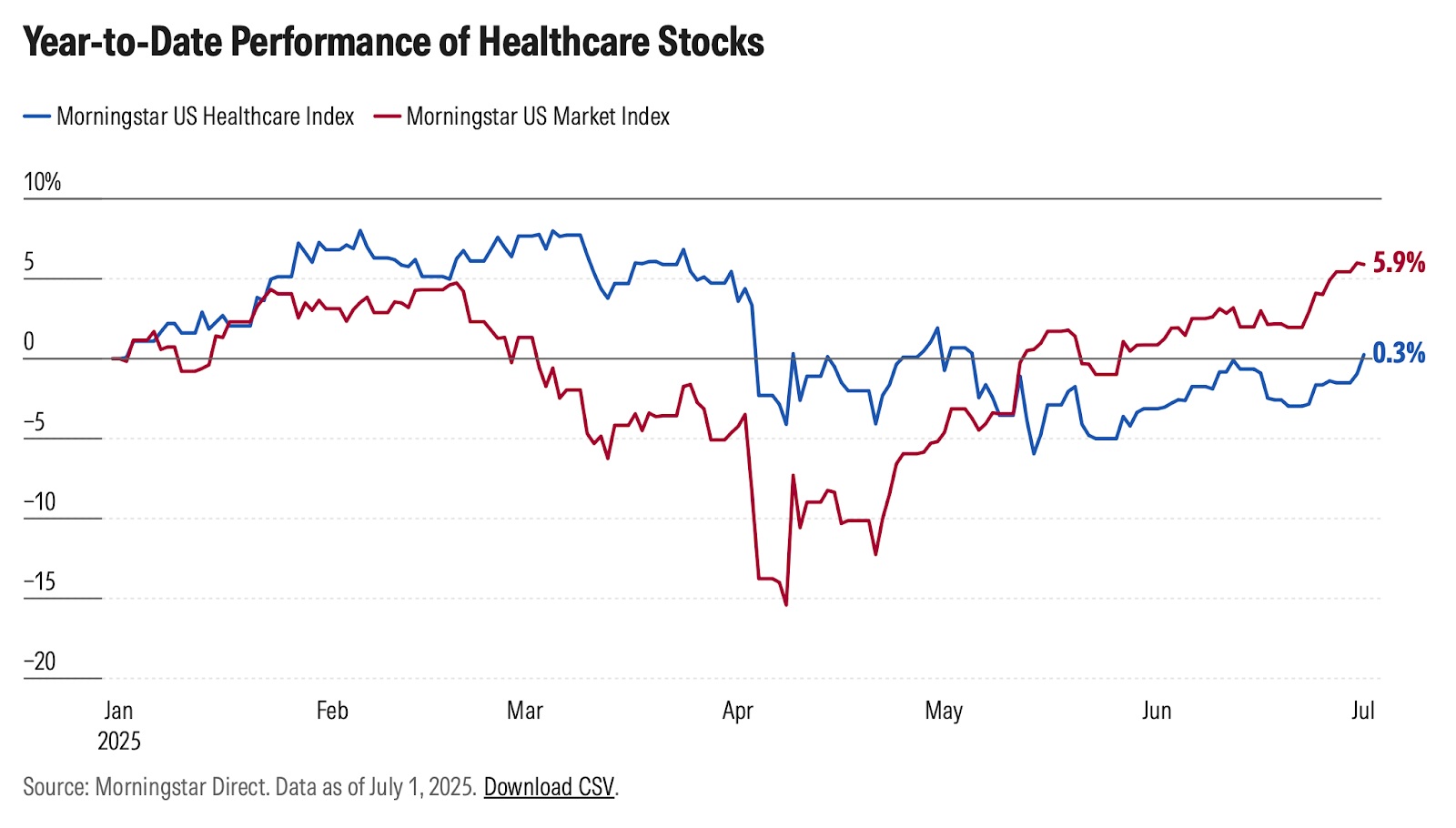
Source: https://www.morningstar.com
Conclusion: Innovation, Resilience, and Rotation Potential
Where everywhere else is growing increasingly beholden to AI euphoria- and macro re-rating narrative-driven markets, the more grounded but still lofty long-term return path is with health care. It is at the intersection of demographic necessity, technological upheaval, and institutional foundation. With all the corresponding vulnerabilities, as always, and in particular around changes in policy and drug trial setbacks, the sector is at a point where upside surprise potential is greater than the downside already ingrained in many valuations.
If you seek an industry that can at once withstand drawdowns and excel through cycles of innovation, then consider the field of healthcare. Its history of underperformance may be the harbinger of the next period of long-term outperformance.



